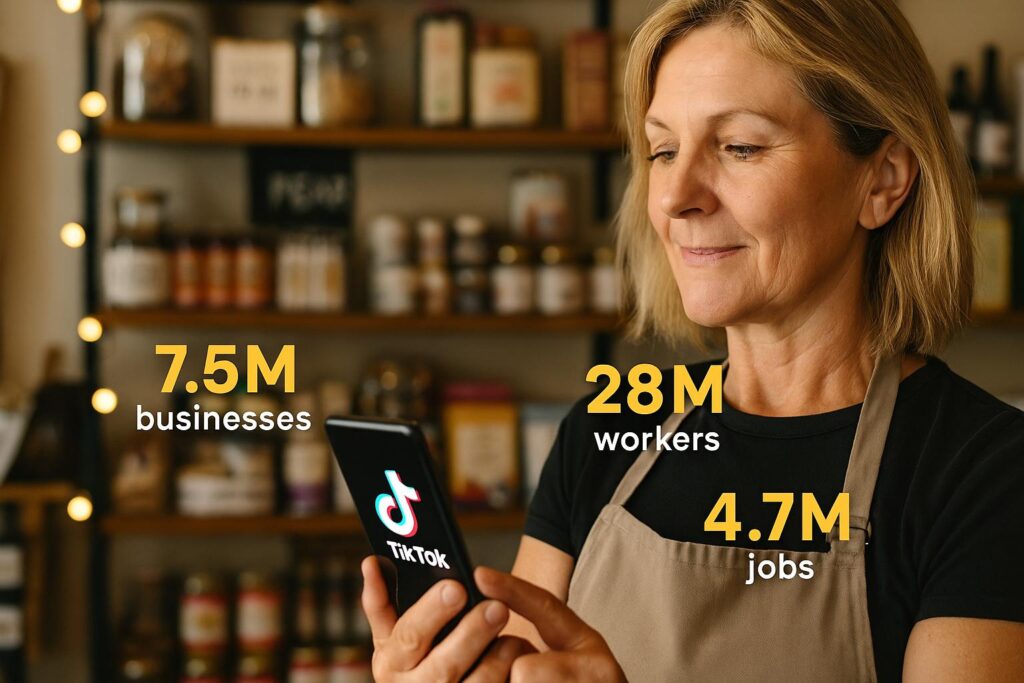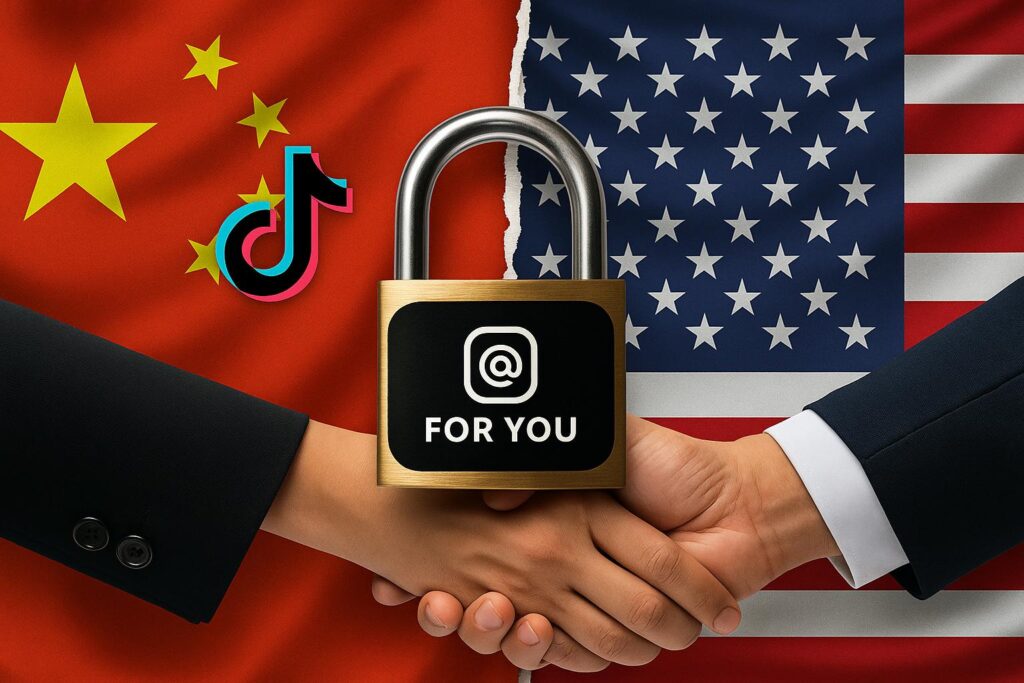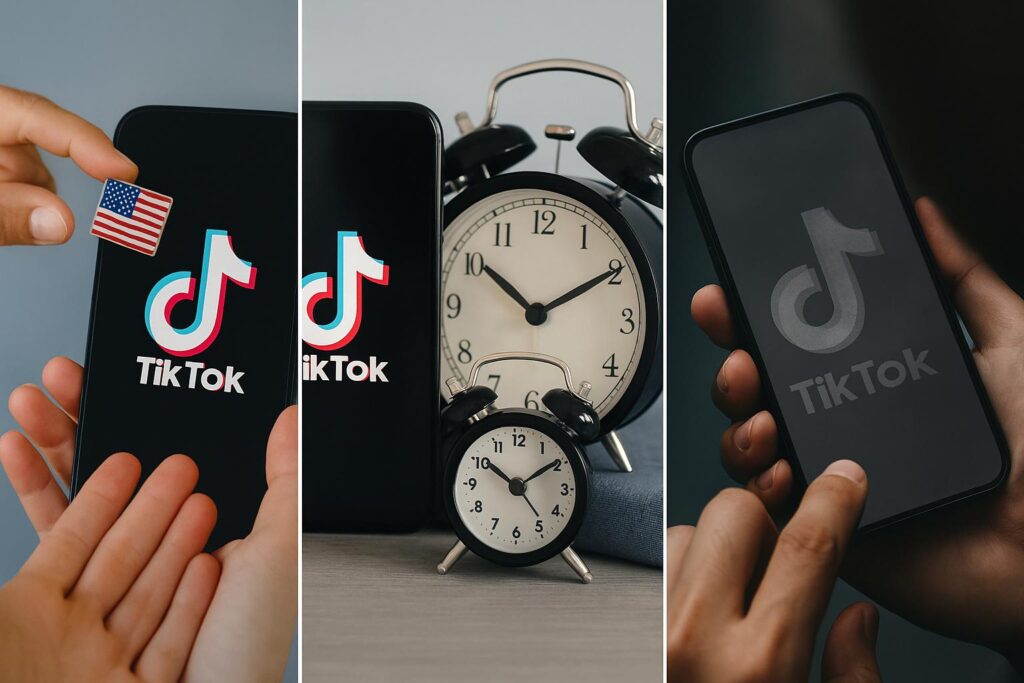For years now, TikTok has lived in a strange place in American politics: both wildly popular and constantly on the chopping block.
Every few months, headlines scream “ban,” creators panic, brands hesitate, and yet, here we are in late 2025, and TikTok is still on millions of phones in the U.S.
Just last week, China Daily ran an editorial calling out what many have quietly thought: if TikTok is truly a “national security threat,” why is the White House itself now on TikTok?
By the way, if you want to stay connected and know everything about social commerce and never miss a beat, join Logie today! Click here
And why do U.S. leaders keep extending the deadline instead of pulling the plug?
To answer those questions, we need to step back and understand what’s really happened and why this debate is more complicated than just “ban it” or “save it.”
How we got here
In 2024, Congress passed the Protecting Americans from Foreign Adversary Controlled Applications Act (PAFACA).
In simple terms, it forced TikTok’s parent company, ByteDance, to either sell TikTok’s U.S. operations to an approved American buyer or face a nationwide shutdown.

TikTok fought back in court, arguing that banning an app used by 170 million Americans would violate free speech rights.
But in January 2025, the U.S. Supreme Court upheld the law. The highest court in the land essentially said: Congress can make this call. The law is valid. TikTok has to divest or leave.
That ruling should have been the end of the road. But instead of shutting down, TikTok is still alive because politics and reality got in the way.
Why TikTok hasn’t gone dark
1. Trump stepped in.
On the very day TikTok was set to go offline, President Donald Trump issued an executive order giving the app 75 more days.
Then in April, he extended it again. Then again, in June, this time all the way to September 17, 2025.
His reasoning? He’s said multiple times that he wants to “save TikTok”, not kill it. He knows younger voters live on the app. Politically, it makes sense.
2. The White House joined TikTok.
In August 2025, the White House quietly launched its own official TikTok account. That’s not just optics, it’s a signal.
If the administration is using TikTok to reach young voters, it’s hard to argue it’s too dangerous for anyone else.
3. The algorithm problem.
ByteDance can’t simply “sell TikTok.” China has export controls that make transferring recommendation algorithms like the secret sauce behind TikTok’s For You feed illegal without government approval.
It’s like trying to sell Coke without the recipe. Without that algorithm, the U.S. version of TikTok would be a shell of itself. Beijing knows this, Washington knows this, and that’s why no sale has gone through.

4. TikTok’s economic footprint.
TikTok points to studies from Oxford Economics showing that 7.5 million U.S. businesses use TikTok, supporting nearly 28 million workers.
Roughly 4.7 million jobs, directly or indirectly, benefit from the platform. That’s not small potatoes.
For local shops, indie brands, and small creators, TikTok has become an economic engine. Shutting it down would hit not just influencers, but whole supply chains.
So what’s next?
1. A divestiture deal.
In theory, a U.S.-approved buyer steps in, takes over TikTok’s U.S. arm, and operates it under American oversight.
This would let TikTok continue largely as-is, but with different ownership and stricter data rules.
The big roadblock? Beijing approving the transfer of algorithmic tech. If that doesn’t happen, the U.S. TikTok might become a “lite” version, less powerful than the global app.
2. More delays.
We’ve already seen Trump issue extension after extension. Could he keep doing that? Legally, the law was designed with only limited extension windows, but presidents have a lot of wiggle room when it comes to enforcement.
Another delay would mean TikTok limps along in uncertainty, still live, but always under threat.
3. A full shutdown.
If no deal is made and no more extensions are granted, Apple and Google would be forced to remove TikTok from their app stores, and hosting providers couldn’t service it.
The app would eventually stop working as updates and infrastructure support disappear. We’ve already seen this play out: in 2020, India banned TikTok overnight.

Users immediately flocked to Instagram Reels and YouTube Shorts. Creators lost audiences, but new ecosystems were born.
What this means for U.S. TikTok creators
Here’s the part that matters most to you.
- Uncertainty is the new normal. You may not wake up tomorrow to a ban, but you also can’t count on TikTok being around forever.
- Diversify your audience. Don’t put all your eggs in TikTok’s basket. Collect emails, grow a following on Reels and Shorts, and make sure your community knows where else to find you.
- Repackage your best work. Your strongest TikToks can often be re-edited for Reels, Shorts, or even YouTube long form. Don’t let your creativity get locked inside one app.
- Talk to brands honestly. Brands are nervous too. Position yourself as a multi-platform creator. Offer packages that include TikTok and other platforms so deals don’t collapse if TikTok stumbles.
- Keep an eye on TikTok Shop. Social commerce is exploding. If you’re selling through TikTok Shop, make sure your catalog is also live on Amazon, Instagram, or Shopify.
Bigger picture
This isn’t just about TikTok. It’s how the U.S. and China view control of technology. The U.S. says it’s protecting national security. China says it’s about U.S. protectionism.
Both sides are using TikTok as a symbol of a bigger struggle over who controls the internet’s most powerful platforms.
That’s why the China Daily editorial frames the U.S. debate as inconsistent and hypocritical. And from Beijing’s perspective, every delay and every new White House TikTok post proves their point.
The bottom line
TikTok isn’t banned. Not yet. But it lives under a countdown clock. Courts say the law is valid. The White House says it wants to save TikTok, but only if it can square that with national security. China says the algorithm isn’t leaving Beijing.
For creators, that means simple math: enjoy TikTok while it lasts, but prepare for the day it may not. Build your audience across platforms. Own your data. Have backup plans ready.











